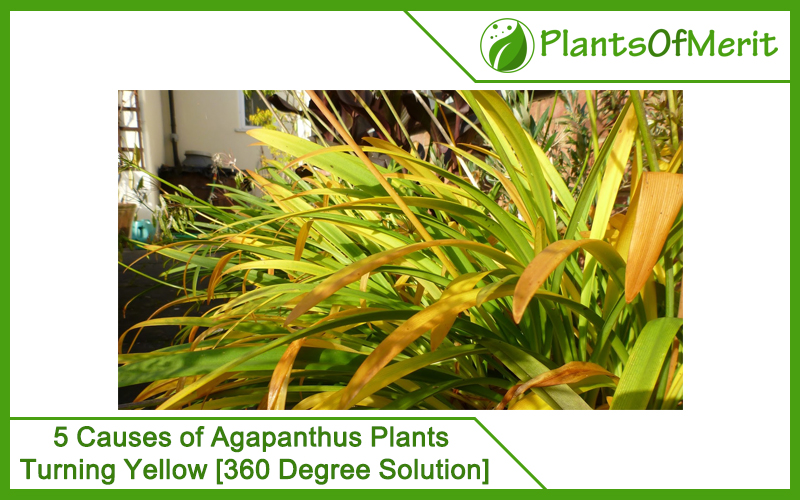Agapanthus is a plant that looks very attractive. It has purple-colored flowers and leaves which resemble straps. Like the rest of the plants, they are prone to some environmental issues. Fortunately, they show signs to help us know the kind of problems they are facing. Leaves turning yellow is one of the most commonly found symptoms.
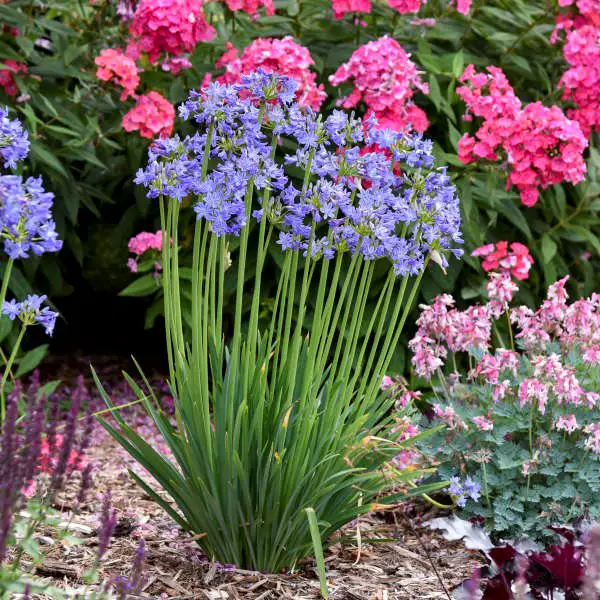
If you notice that the leaves of your Agapanthus plant are turning yellow, you must take immediate action to prevent the plant from drying. First and foremost, you should know the right steps as a single wrong step can cause damage to your plant. Here are the most crucial reasons for the Agapanthus plants becoming yellow along with solutions:
1. Lack of Iron
If the leaves of your agapanthus plant have low iron, they will start looking yellow. There are times when there may be sufficient iron within the soil. But, due to the high pH value of the soil, they won’t be able to take that iron. Repetitive iron chlorosis will make your agapanthus plant unhealthy with saggy leaves. The leaves will look yellow and have green veins.
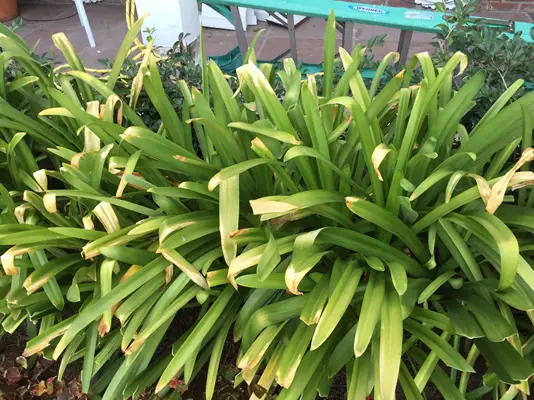
Solution
Choose the perfect fertilizer for your agapanthus plant that has iron. Use the fertilizer by adhering to the instructions mentioned by the manufacturer. Use a pH meter to check the pH value of your soil. If the soil has a pH value greater than 7, change it with a bit of Sulphur or any other acid-based fertilizer.
2. Excessive watering
Excessive watering is one of the key reasons why the leaves of the agapanthus plant can turn yellow. If you continue overwatering your agapanthus plant, the leaves on the lower part of the plant will become yellow initially and will die. Excessive water can make the leaves lose and cause other fungal infections.
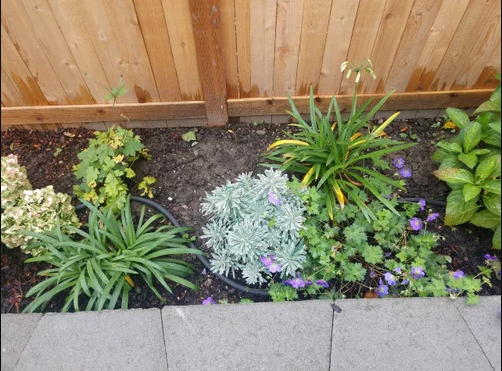
Solution
Agapanthus plants don’t like having wet roots. So, you should water only when the topmost three inches of soil are dry. In the rainy season, you don’t have to water if there is ample rainfall. You can avail a moisture meter to get a proper idea about when you should water your agapanthus plant. Also, keep in mind not to water the leaves so much that they become wet. Just water the base of the plant to prevent any kind of fungal infection.
3. Pest Attack
Mealybugs and Spider mites can attack the Agapanthus plant very easily. These pests can suck the juice out of their leaves by making small ruptures in them. As an outcome of this pest attack, the leaves become yellow. With the spread of this infestation, the complete leaf will become yellow and start wilting.
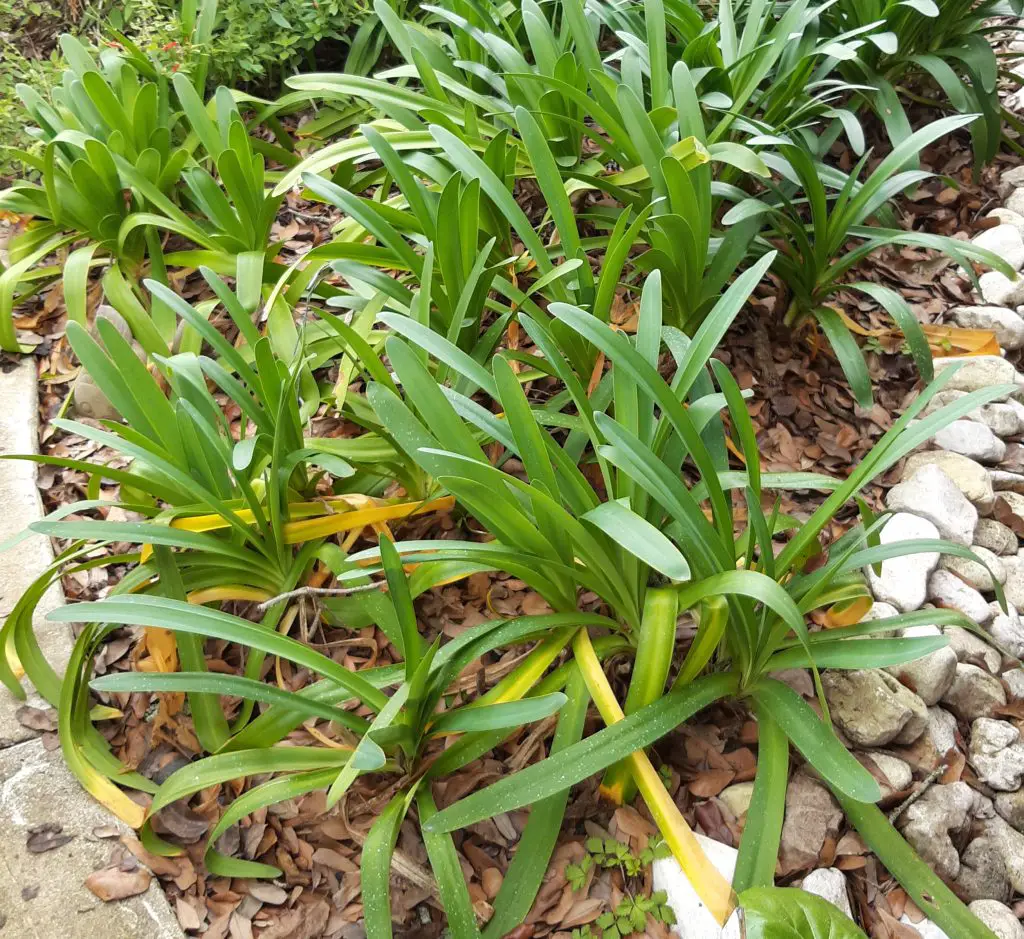
Solution
You must take measures to control these pests just when you find them on the agapanthus plant. The reason is that their feeding can make the plant very weak. Try getting the safest pesticide for your agapanthus plant as it will kill all pests effectively. Don’t forget to spray the pesticide properly all over the agapanthus plant. You can also keep these pests away with easy homemade pesticide recipes. Here are a few you can try:
- Neem Oil Recipe
The ingredients you need in this recipe are 2 liters of water and 1 tbsp. Neem oil. The steps involved are mixing all ingredients and spraying all over the plants once a week. Use this on the leaves of agapanthus regularly as a measure to prevent pest attacks.
- Horticultural Oil Recipe
To prepare this recipe, you need 500 ml of cooking oil, 2 tbsp. of a liquid dishwasher. Start by mixing all ingredients properly. Store the mixture in a bottle. Take a tbsp. of this recipe combined with 250 ml water. Transfer it into the spray bottle. Spray this mixture once a week on all sides of the leaves of your agapanthus plant.
You must note that before using these recipes on your agapanthus plant, it is recommended that you try it on a tiny leaf to find the reaction. If there is a distortion of leaves, try mixing a bit of water for diluting the solutions. Also, keep in mind that the leaves of the agapanthus plant are very dangerous. So, you must be very careful when you handle this plant. Don’t forget to put on hand gloves when you work with this plant as it can irritate your skin. It can cause your mouth and throat if consumed orally.
4. Sunburn
Agapanthus plants can grow ideally under amend sunlight but at times, excessive heat from the sun can cause them to get sunburnt. This can also make the tips of the agapanthus plant look yellow. They require 5-6 hours of sunlight every day but in dry weather, the heat produced from the sun can burn the leaves of the Agapanthus plant.
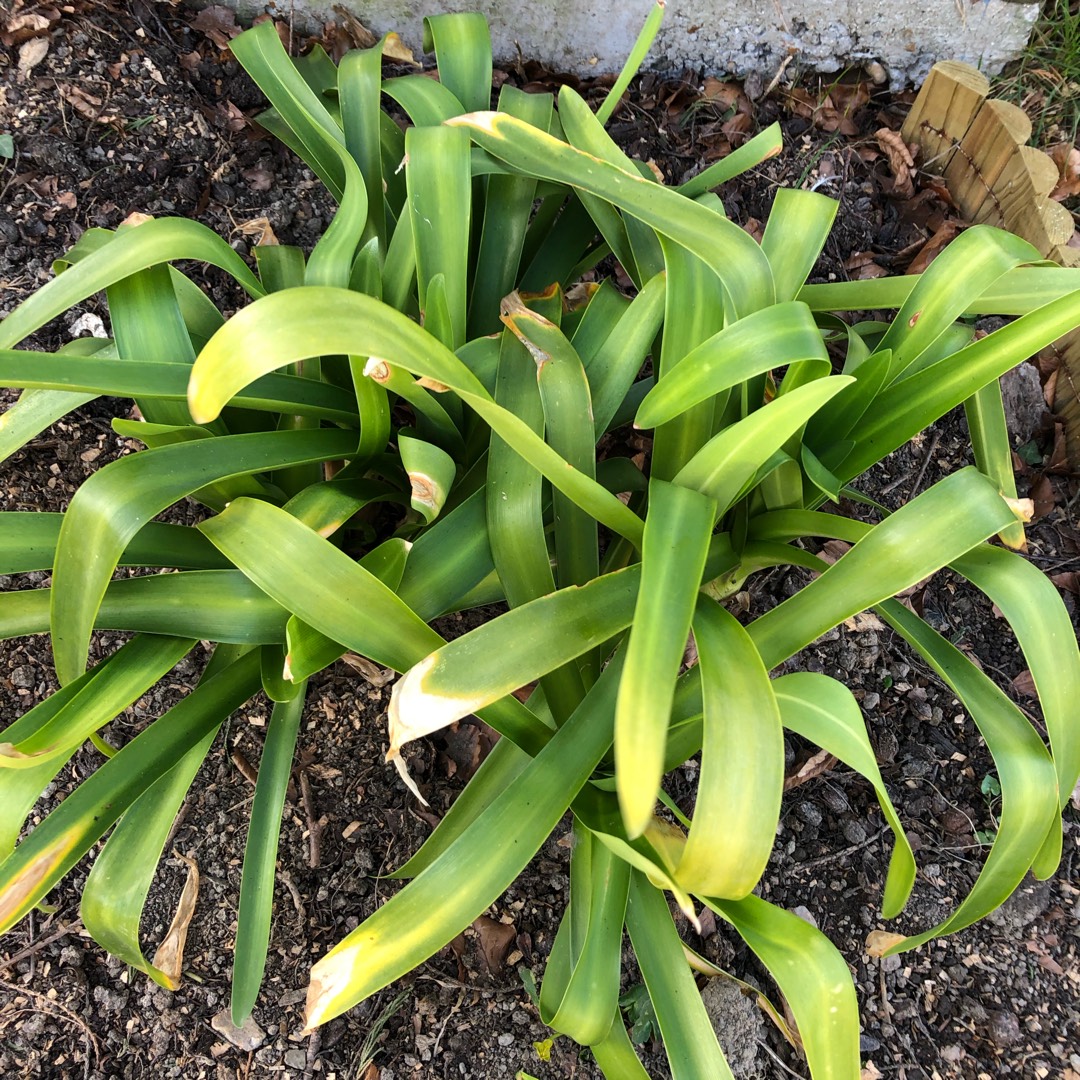
Solution
Keep your Agapanthus plant protected by providing a bit of shade in the afternoon. This will save it from the dry and hot spells of the sun. Also, add a layer of organic mulch near the plant. This mulch helps in retaining moisture, Insulating, and the heat, and keeping the soil moist.
5. Fungal diseases
If your agapanthus is in wet soil and shady conditions, it can get attacked by various fungal infections. The diseases include leaf spot, anthracnose, and root rot will make the leaves of agapanthus look yellow.
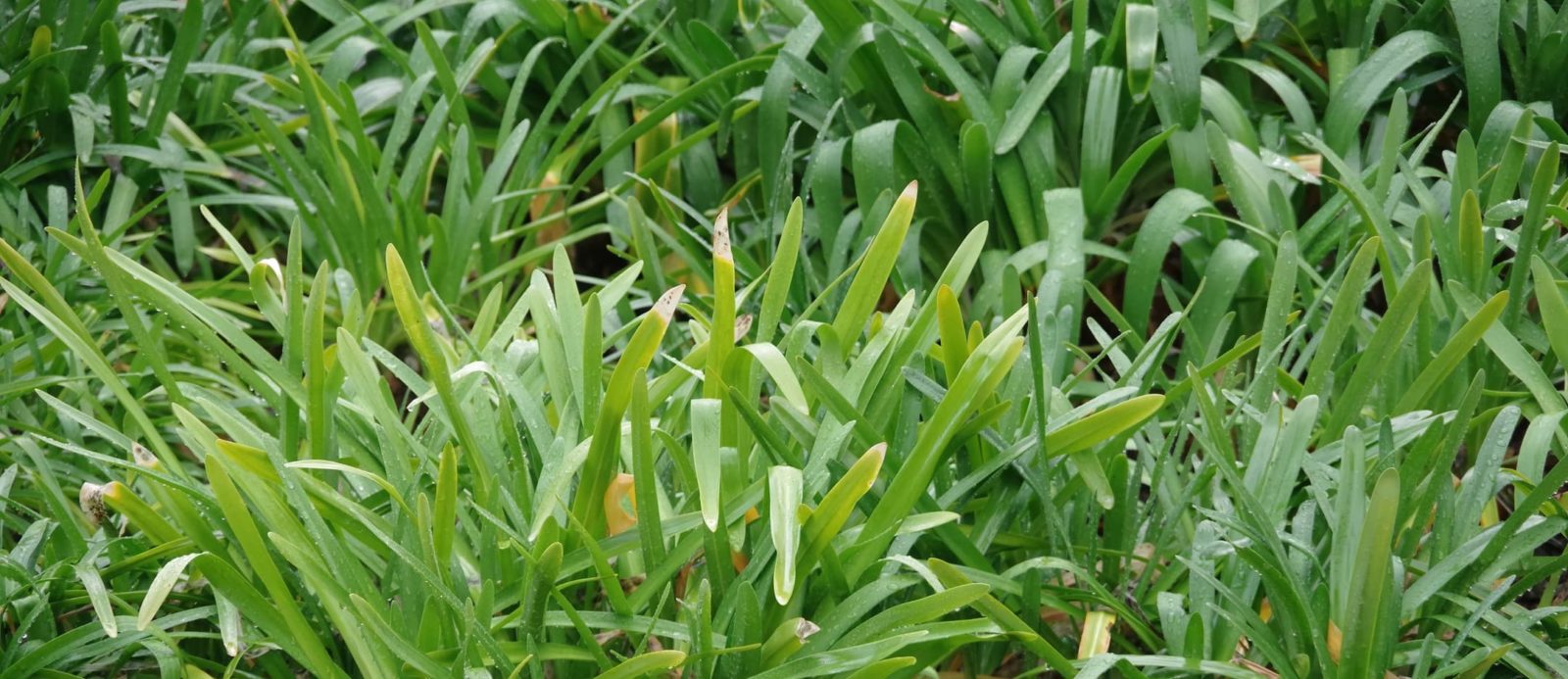
Solution
Start by removing all infected yellow leaves from your agapanthus plant and be careful in the procedure. After removing all yellow leaves which are infected, use a good fungicide on the plant that is effective in the prevention of fungal diseases. Use at regular intervals of 10-15 days till the disease is completely gone.
Conclusion
If you find a color change in the leaves of your agapanthus plant, you don’t need to overthink it much. The reasons why these plants turn yellow have been discussed above in this post along with their respective solutions. Once you can relate to the cause, use the proper solution to get rid of the problem. These reasons are severe signs of your agapanthus plant getting damaged and if you don’t look into them at the right time, the plant may die.

